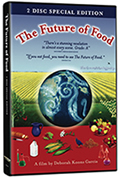VULCAN RISING
by Steven Neill
February 27, 2013
NewsWithViews.com
Water is the one compound we cannot live without; it covers two thirds of the earth's surface and makes up 75% of the human body. We use water for drinking, transportation, food production, cleaning, cooking, generating electricity and many other things. This odorless, tasteless compound that so many Americans take for granted is essential for life as we know it. In some ways it is understandable because it’s only a push of a lever away. Worldwide however, over a billion people lack access to potable water. According to the World Health Organization, at any given time, up to half the earth’s population is suffering from diseases associated with poor drinking water or inadequate sanitation with about 5 million people a year dying from water issues and it’s only getting worse.[1] There are also many still living that remember horrific drought in this country. To some, the visions of billowing clouds of dust stretching as far as the eye could see still haunts their memories and they can look back at the Black Sunday Dust Storm of 1935 as a nightmare that won’t go away. They remember the utter desolation of 100 million acres of land caused by drought and immortalized by John Steinbeck in “The Grapes of Wrath,” and America would do well to prepare for its return.
Black Blizzards
For countless eons, the US Great Plains was a land of buffalo, Native Americans, and vast oceans of prairie grasses. While droughts were a common occurrence on the plains, the mobility of the inhabitants allowed them to thrive. This system changed however when farmers started plowing under the native grasses and replaced them with wheat. Though there were short periods of drought, generally the area had adequate rainfall and produced bountiful crops. But beginning in the early 1930’s, the rains stopped coming while the farmers, hopeful of coming rains, kept plowing and planting crops that withered and died. This left huge areas of broken up soil that was easily picked up by the constant winds of the plains creating billowing clouds of dust. As the drought intensified, the clouds became more common and lasted much longer.[2] [3] [4]
The National Weather Service reported fourteen dust storms in 1932, thirty eight in 1933 and the countless storms were of unimaginable ferocity by 1934. One two-day dust storm removed so much topsoil from the Great Plains that it dumped an estimated 12 million pounds of dust in Chicago and later dusted out Buffalo, Boston, and even New York City. That winter, snow, the color of red containing dust covered huge areas of New England. Still, the farmers plowed and planted, further wreaking havoc on landscape that more resembled the Sahara Desert than the central US.[2] [3] [4]
In the spring of 1932, the epic drought was affecting over 75% of the country creating a dust that people scooped up by the bucketsful while cleaning house. Dust blocked windows and doors, covered vehicles and in some instances, entire buildings.[2] [3] [4] But nothing up to this point prepared the people in these areas for the Black Sunday Dust Storm of April 14, 1935.
A rolling, black maelstrom of night moving with the speed of the wind enveloped the lands in what many unfortunates thought was the end of the world. Pauline Winkler Gay described it like this: "It was as though the sky was divided into two opposite worlds. On the south there was blue sky, golden sunlight and tranquility; on the north, there was a menacing curtain of boiling black dust that appeared to reach a thousand or more feet into the air. It had the appearance of a mammoth waterfall in reverse – color as well as form. The apex of the cloud was plumed and curling, seething and tumbling over itself from north to south and whipping trash, papers, sticks, and cardboard cartons before it. Even the birds were helpless in the turbulent onslaught and dipped and dived without benefit of wings as the wind propelled them. As the wall of dust and sand struck our house the sun was instantly blotted out completely. Gravel particles clattered against the windows and pounded down on the roof. The floor shook with the impact of the wind, and the rafters creaked threateningly. We stood in our living room in pitch blackness. We were stunned. Never had we been in such all-enveloping blackness before, such impenetrable gloom." One commentator called this dust cloud a “black blizzard.”[5]
The drought resulted in turning 100 million acres of Kansas, Texas, Colorado, Oklahoma, and New Mexico into wastelands, displacing millions of residents, and increasing the severity of the Great Depression. These “Okies” left behind their homes, possessions and dreams as their land was literally taken by the winds.[2] [3] [4]
We Know the Value of Water When the Well Has Run Dry
By using much more environmentally sound practices, the devastating consequences of the 1930’s drought were not repeated when the Midwest went through a serious drought in the 50’s. Since then there has been adequate moisture in conjunction with irrigating the fields for the area to be the breadbasket of the world. But time may be running out on that title as the rainfall in that area has been extremely low and the Ogallala Aquifer is getting dangerously low on water.[6]
The area experienced the worst drought in over 800 years during 2000-2004 and a study published in the journal Nature Geoscience predicted the area would continue to parch and concluded it may be the beginning of a Magadrought. This theory has been strongly supported by the massive drought which has been going on since 2010. This affected 80% of the lower US in July, and is considered the worst drought since the 1950s but not yet on the scale of the 1930’s dust bowl.[7] [8] [9]
The 2012 drought covered the largest area by a natural disaster in US history affecting all or parts of 26 states as well as parts of Canada and Mexico. The heat wave broke over 170 all-time temperature records in June. The continuous days of 100°+ created the perfect conditions for the monstrous forest fires that soon began to raze the bone-dry forests of the west.[7] [8] [9]
Hundreds of thousands of acres and hundreds of buildings charred as the greedy flames consumed the drought stressed area of Utah, Wyoming, Montana, New Mexico, Arizona and Idaho. The maelstrom in Waldo Canyon Colorado alone burned 18,247 acres of land, forced the evacuation of some 32,000 residents of several communities and destroyed 346 homes. This was the most expensive fire in Colorado State history with insurance claims totaling more than $352.6 million dollars.[10]
The fires are only part of the devastation this drought has caused. 2012 was predicted to yield bumper crops of corn and soybeans but as the summer ground on, those predictions evaporated along with the moisture from the soil. In many areas, the crops were totally ruined by the lack of water. In November, the USDA's National Agricultural Statistics Service (NASS) production estimates for corn were down 27.5 percent and estimates for soybeans fell 7 percent. The crop loss is projected to be $75-$150billion and is on track to become the most expensive natural disaster in US history.[11] [12]
This massive drop in production drove the price of corn and soybeans to record levels. Because so many of the items Americans eat contain corn or soy, it drove the cost of everything else up as well.[11] [12]
The drought severely affected over half of America’s range and pasturelands forcing many farmers to slaughter their herds or face ruinous feeding costs. Beef production is expected to decline 6.5% from 2011 levels; poultry and pork production is also dropping. The price consumers will pay for meat is also expected to continue to rise.[11] [12]
Other things affected by the drought are just as catastrophic; the US Corp of Engineers had to dredge more than 8 million cubic yards of sediment from the Mississippi River to allow even lightly loaded barges to continue to navigate the dangerously low river.[13] This has increased travel time and expenses by billions of dollars. Lake Huron and Lake Michigan are now at record low levels.[14] Another ominous flashback from the thirties is the return of monstrous “Black Blizzards.” Huge dust storms have appeared in Arizona, Texas and Oklahoma causing wrecks and closing down Interstate Highways.[18] [19] [20]
In 2011, on average, Americans spent 8.6% of their income on groceries but this is expected to change by at least 3%-4% according to the USDA. In particular, chicken prices have surged 14.3% and wholesale beef and veal prices rose 8.2%.[15] [16]
The loss of American crops along with falling production levels in the Ukraine and other countries has dropped worldwide grain reserves to their lowest levels since 1974. The population of the world was around 4billion in 1974 whereas today it is over 7billion.[21] Food consumption has exceeded food growth in six of the last eleven years, dropping world reserve from 107 days 10 years ago to 74 days today.[15] [16] The world is dangerously close to a famine of unparalleled size.[17]
| Subscribe to the NewsWithViews Daily News Alerts! |
However, as with other dark periods in our nation’s history, there are things you can do to mitigate some of the increasing costs and prepare for a possible food shortage that may well be around the corner. If you have a yard, consider putting in a vegetable garden and fruit trees. If you don’t have space available, look into community gardens that are springing up all over the US. When you go shopping, buy two cans of something instead of one. Look into books like the classic “Dare to Prepare” by Holly Drennon Deyo and other sources for food storage. Also, look into dehydrated and freeze dried foods if you can afford them. It is always a good idea to have a at least a few weeks supply of food on hand as hurricane Sandy once again showed for all who are willing to look.
Thousands have lived without love, but not one has lived without water. — W.H. Auden
Click here to visit NewsWithViews.com home page.
Footnotes:
1. Water
Woes
2. About
the Dust Bowl
3. The
Dust Bowl
4. Dust
bowl
5. Black
Sunday April 14, 1935
6. Ogallala
Aquifer
7. The
2000-2004 North American drought was the worst in 800 years
8. US
declares drought-stricken states largest natural disaster area ever
9. Summer
2012 North American heat wave
10. Waldo
Canyon fire
11. Southern
US drought
12. US
drought 2012: Farm and food impacts
13. Dredging
ends on stretch of Mississippi river
14. Two
great lakes hit record low levels: climate crisis or natural cycle?
15. What
about food inflation, Bernake? CNN Money
16. Corn
drop seen as US sows most since 1936: commodities
17.
UN
warns of looming worldwide food crisis in 2013
18.
NASA
images
19.
Lubbock,
Texas dust storm 2012 triggers car crashes on interstate 27
(Photos)
20.
Giant
dust storms stir up health risks in Arizona
21.
Negative
Population Growth
© 2013 - Steven Neill - All Rights Reserve










 Share
This Article
Share
This Article



